The vegetable garden revolution
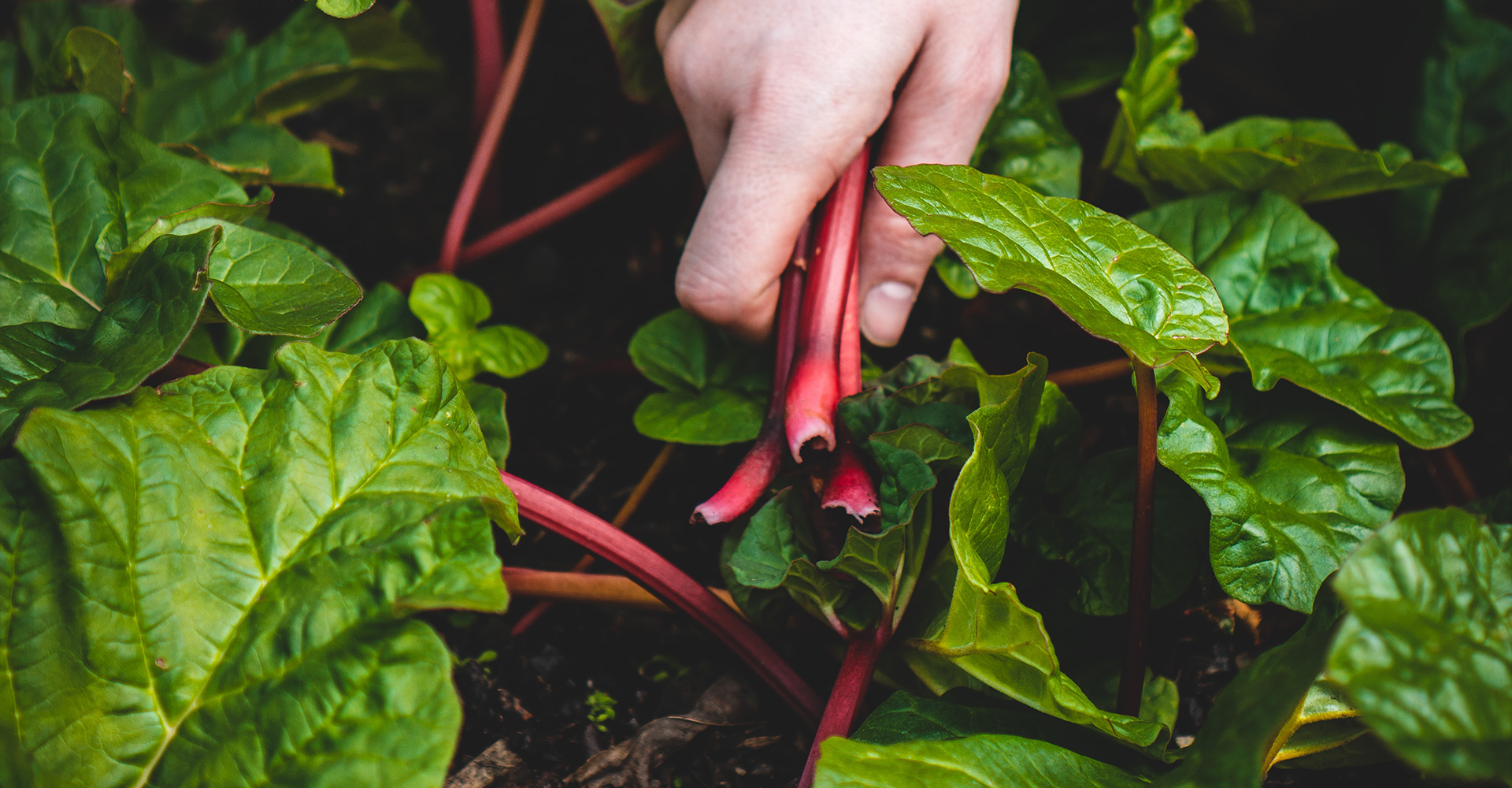

Having a home garden is a trend that is here to stay. Growing your food is nothing more than a form of activism that we invite you to explore through four Instagram accounts that offer valuable information, tools, and courses. But above all, they are inspiring.
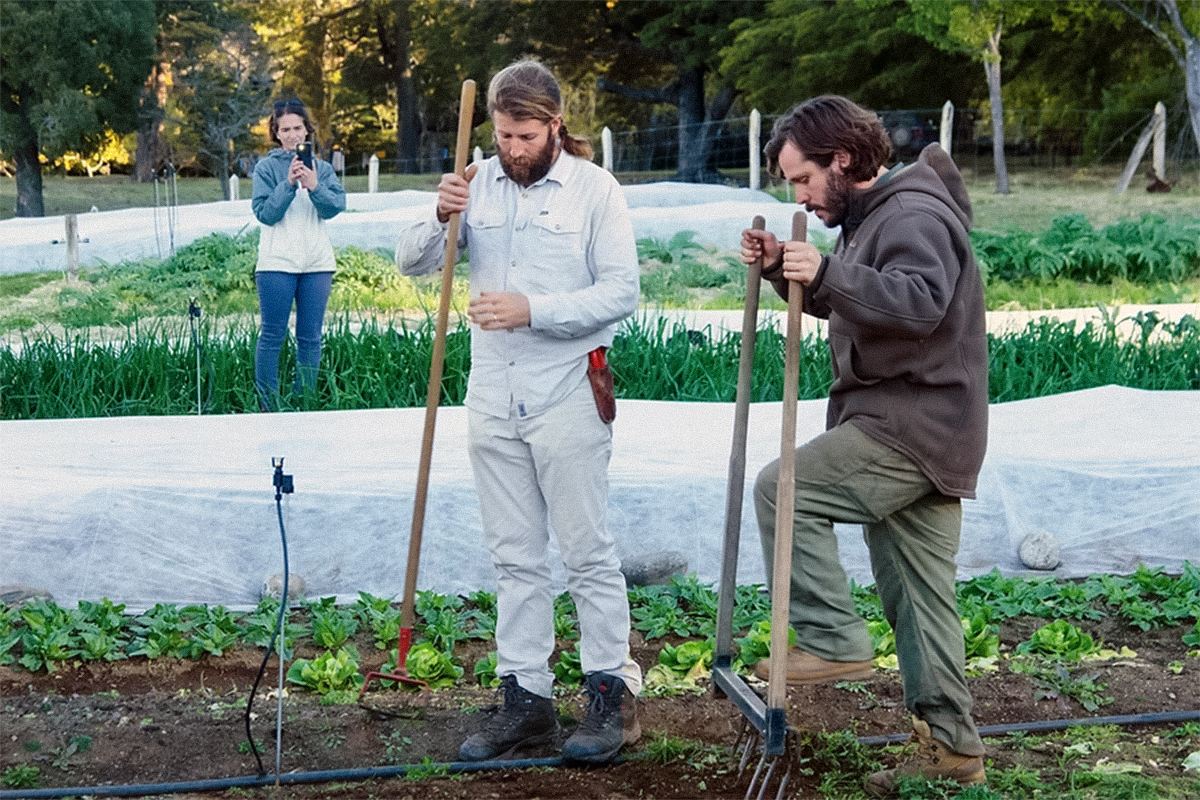
It was 2013 when agronomists Francisco Vio and Javier Soler were working in a commercial organic garden in Ecuador. It was the beginning of a path that would soon lead them to Patagonia National Park, to work for five years in developing a biointensive garden that would supply a restaurant and 15 families. After this experience, they wanted to continue growing, and in 2018 they started the Four Seasons Orchard, supported by the Foundation for Agrarian Innovation (FIA), located in the Aysén Region, specifically in Bahía Catalina. “At first, we thought we would supply only Puerto Guadal and Puerto Tranquilo, which are the closest little towns, but we started producing so much food that we started going to Coyhaique. That’s our main market, we go every week from November to May, and we supply 400 people, including around 200 families and several restaurants,” says Francisco Vio.
This garden of 2.500m2 functions thanks to nine people who produce over 30 different vegetables, in addition to education, training, and consulting programs. There they share knowledge with people interested in establishing a commercial or domestic garden under the practice of Regenerative Organic Agriculture. What does this mean? “Regenerative agriculture has many nuances, but I see it as a path with three main pillars. The first is the soil, which we regard as alive and promote its microbiology. The second pillar is animal welfare, and the third focuses on the human aspect (community) that has to do with farmers’ and consumers’ quality of life,” adds Vio.
He tells us that in the orchard, “we like to eat spit-roast and accompany it with a good Cabernet Sauvignon or Carmenere.”
Precisely two of the red varieties of Concha y Toro Gran Reserva, a line committed to protecting the local biodiversity of its vineyards located in the Colchagua and Cachapoal valleys.
More information about courses and workshops at www.huertocuatroestaciones.cl
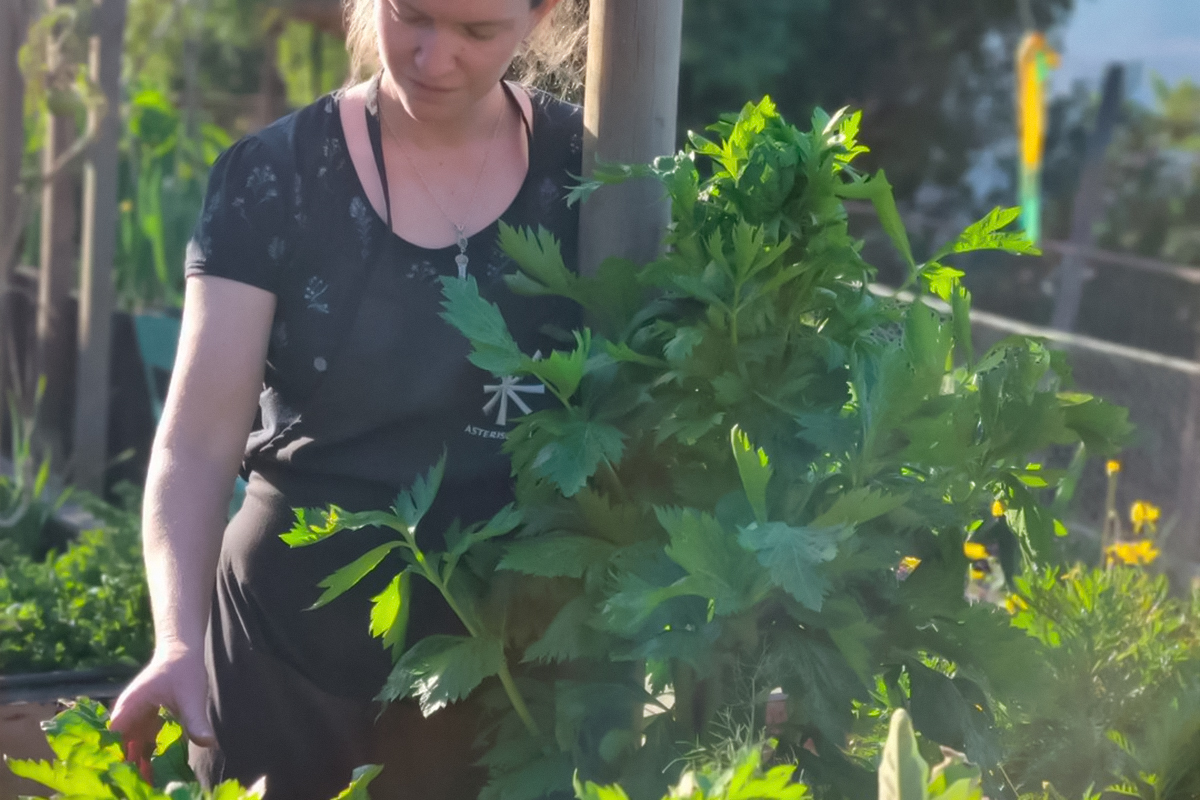
Florencia started out growing herbs ten years ago in small-scale farming. But when she decided to leave Santiago to live on the beach, the idea was always to have a vegetable garden. He started with three terraces. “Before the pandemic, we had between six and eight plots, and during the pandemic, we doubled that. Now we have 14 plus fruit trees and a hill where we have artichokes, blueberries, asparagus, raspberries,” explains Florencia, creator of @intentandola. In this account, she shares many of her experiences in the garden, as well as her great passion: writing. “The vegetable garden is too beautiful, too healing. It is a very educational and entertaining space for people with children. In addition, it teaches them something as important as food, to be grateful for where things come from, and to be in contact with nature. Yesterday with my children, we harvested the potatoes we will eat today. And they are potatoes that they planted themselves, and they are two and four years old. I think that’s priceless for a child’s education, memories, and self-esteem,” she says. And she adds: “I would also say that it’s pretty straightforward, with a lot of trial and error. But it’s good to get a little bit of information beforehand. I gave myself a lot of trouble because I didn’t know anything, I had had a vegetable garden for five years, and my production was deficient. During the pandemic, I took a course with @cosechandola, and it was a before and after because I understood everything. What plants I had to put in the sun, the seasons of the plants, which ones couldn’t be in the shade, how the soil had to be, super basic things. But they helped me a lot so that all my effort would bear fruit.
Florencia shares many tips on making a garden to inspire others and as a form of resistance. “Doing something for the planet is having your garden, that your food comes from your home and you don’t depend on industries. In addition, you eat healthy, organic food. You lose your fear. I know that with my box of seeds, I’m never going to starve,” she says. “A dish that I make a lot and that is exquisite with tomatoes, eggplants, chard, and spinach from the garden is Eggplant Lasagna. It is exquisite with a wine like Gran Reserva Carmenere”, he finishes.
To learn more about Florencia Ana, you can visit www.florenciaana.com
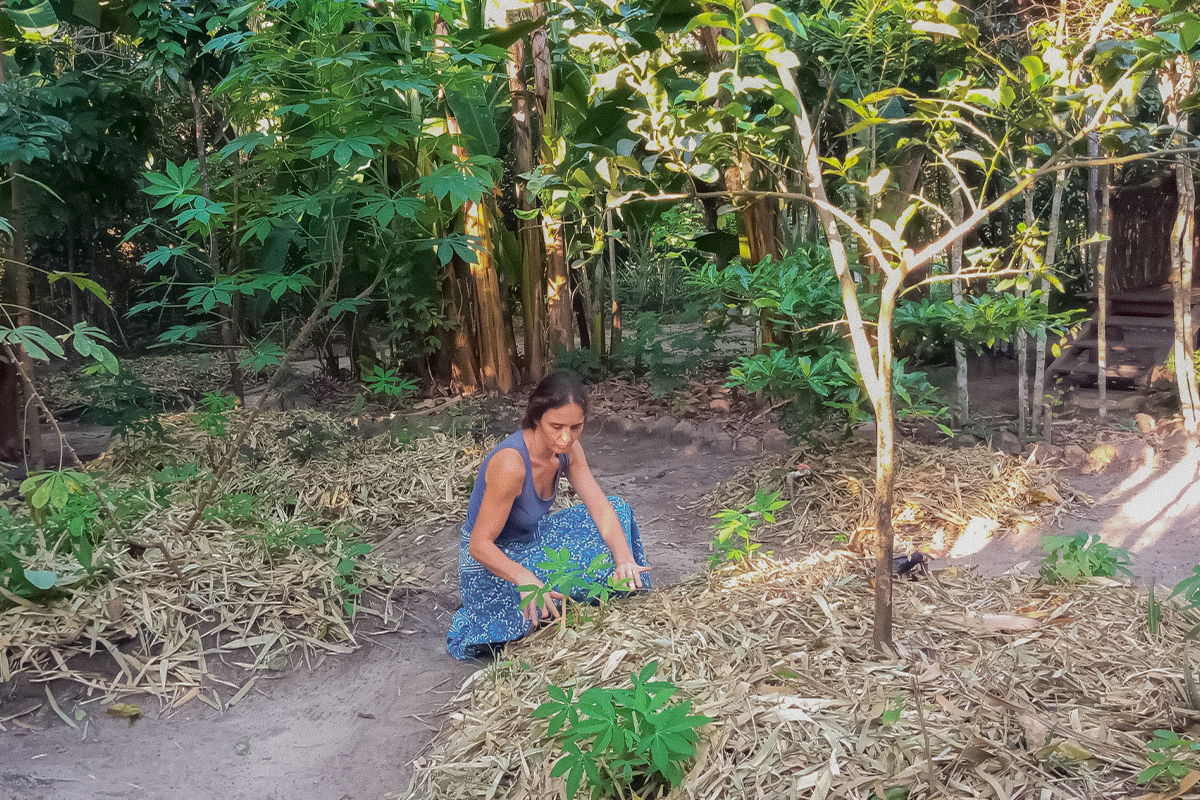
Paula is an agronomist and started her garden 14 years ago in a mountainous area of Chile. “I didn’t want to live in Santiago because I wanted a space to grow, and there I had a big space. I made a greenhouse, started growing for myself, and started getting people excited. Then I began offering to grow vegetable gardens in other places, realizing that making for others and teaching them how to manage them was crucial. Otherwise, I had to go every week to support them. And that’s when I started to pass on the information that led to these courses I’ve been doing for 12 years,” Paula says. She taught for eight years until she went to live in Brazil to learn about tropical agriculture and also in search of a more sustainable lifestyle. Although from Brazil, she continues to teach courses for Chile. “Now I am giving full 4-month training courses, with classes once a week. People leave knowing how to make a vegetable garden in an apartment or to cultivate at the field level, do business, sell surpluses, and set up a small company. I help them through the whole process,” Paula explains. In addition, she has just launched her book Agricultura en tus manos (Agriculture in your hands), in which she discusses the 54 main species of the Chilean vegetable garden with beautiful illustrations and photographs, another excellent tool for those interested in joining this movement. “I’ve already sold a thousand copies, so I’m thrilled and will reprint it.”
She adds, “Gardening influences many things in people’s lives. It’s not just the act of eating a product made by you, it’s much broader. It brings many benefits, and people realize that”.
To access course information and buy the book, go to www.agrocultiva.cl
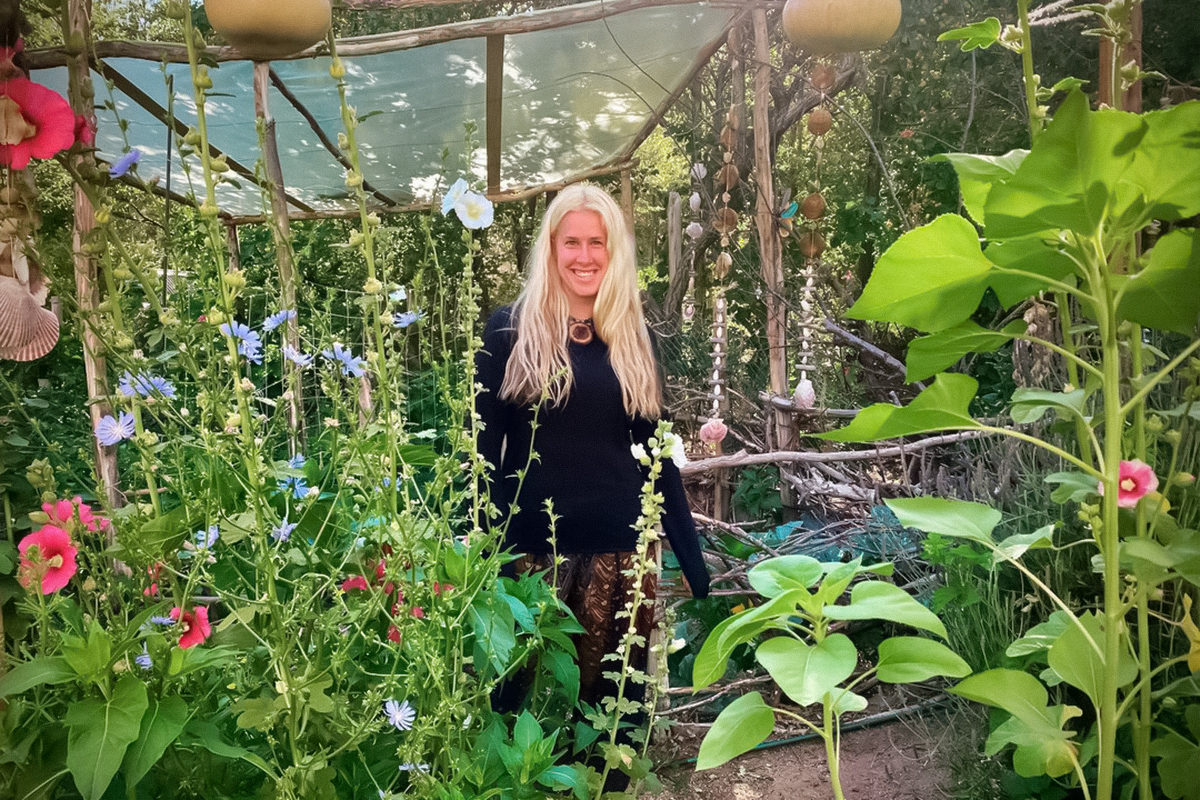
Kate Farmer came to Chile with a scholarship to study and work for three months at the Alma Crea Foundation in the Elqui Valley. However, she ended up staying for ten years. She is the person behind @kate.la.farmer, the Instagram account she started in early 2020 to awaken and inspire others, “but I also wanted to showcase my years of farming experience to teach others. Until then, I had left social media,” she explains. “I have six greenhouses and eight vegetable gardens. I grow the vegetables that I feel comfortable with, that grow in this climate, and I experiment a little at a time, but it’s to ensure I have a good harvest. We harvest zucchini, tomatoes, green leaves, beans, corn, and squash in summer. We reduce our expenses a lot, and in the summer, we don’t have enough for the whole harvest and save a lot. There are ways to preserve, and they are delicious,” she adds. The foundation works with the traditional Elquina vegetable garden women planted 100 years ago. They maintain it organically and ecologically to promote nature’s life and collaboration. “What I love about farming is the taste of the food. The vitality of food that has been grown organically is so different. It’s a similar kind of therapy. It helps me learn more about myself and how impatient or frustrated I am. So the garden makes me stop, observe and enjoy. We see the planetary crisis that we have to take care of the planet, but how much can we do if we don’t know how to take care of ourselves. We can’t take care of something external if we don’t know how to do it internally. Nature shows us a lot about how we treat ourselves,” she reflects. Kate is also part of the podcast Cuatro Huertas and is the author of the book Huerto: Un universo desconocido, which is available in English and Spanish. Her favorite food is fresh salads, which she eats year-round. She loves the Salad of purple mustard greens, arugula, parsley, lettuce, spinach, sprouts, canned sun-dried tomatoes, onion, elquina avocado, and cooked sweet potatoes. It goes fantastic with Gran Reserva Sauvignon Blanc.
You can learn more about Kate’s work at www.fundacion-alma-crea.cl
We comply with the highest standards of verified social and environmental performance, transparency, and legal responsibility to balance benefit and purpose.
We adopt an Impact Business Model, creating beneficial links between business, community, and environment.
The Gran Reserva vineyards are an important part of the project to conserve native forest areas and protect local biodiversity. Our native forests have the ability to retain rainwater and control the kind of climate change that results from water shortages.
We take care of 1,432 hectares of protected forests and, on average per vineyard, a total of 105 species of fauna and 48 species of registered flora.
Our effort to preserve nature begins with responsible water consumption. 99% of the water we use comes from surface and subterranean sources.
Our vineyards are drip irrigated, which translates to a 90% efficiency on water consumption, and over the past 3 years, we’ve reduced our water footprint by 10%.
All of our winemaking processes require the use of energy. Our choice to invest in clean, renewable energy reflects our desire to co-create a sustainable planet for the future.
100% of the electricity used to make the wines in the Gran Reserva collection come from renewable sources, including solar energy.
Concha y Toro has been certified under the Wines of Chile Sustainability Code since 2012, which means that our vineyards are officially recognized as sustainable vineyards.
The wines in our Gran Reserva collection are crafted entirely from estate-owned grapes in sustainably managed vineyards.